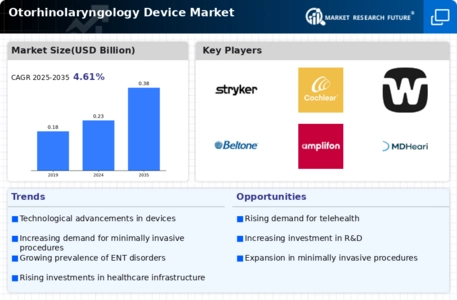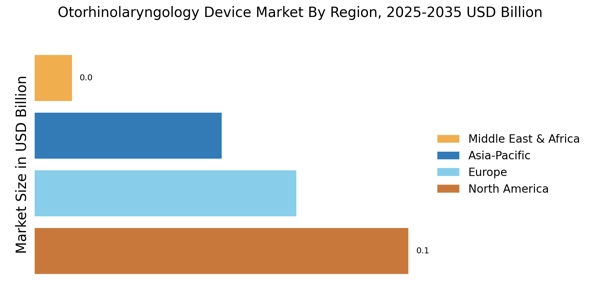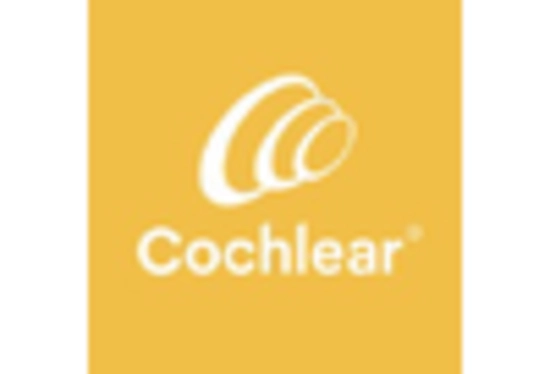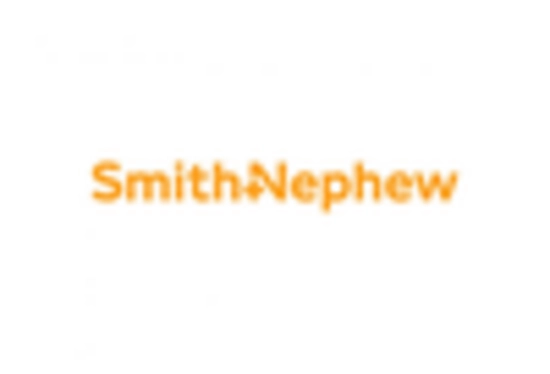Aging Population
The demographic shift towards an aging population is a critical driver for the Otorhinolaryngology Device Market. As individuals age, they often experience a higher prevalence of ENT disorders, including hearing loss, sinusitis, and throat-related issues. According to recent statistics, the incidence of hearing impairment is projected to affect approximately 1 in 3 individuals over the age of 65. This increasing demand for effective treatment options is likely to propel the growth of the otorhinolaryngology device market. Additionally, older adults are more inclined to seek medical interventions, further contributing to the market's expansion. The combination of a growing elderly population and their specific healthcare needs presents a substantial opportunity for manufacturers in the otorhinolaryngology device sector.
Technological Advancements
The Otorhinolaryngology Device Market is experiencing a notable transformation due to rapid technological advancements. Innovations such as minimally invasive surgical techniques, robotic-assisted surgeries, and advanced imaging technologies are enhancing the precision and efficacy of ENT procedures. For instance, the introduction of endoscopic devices has revolutionized sinus surgeries, allowing for improved patient outcomes and reduced recovery times. Furthermore, the integration of artificial intelligence in diagnostic tools is streamlining the identification of otorhinolaryngological conditions, potentially increasing the accuracy of diagnoses. As these technologies continue to evolve, they are likely to drive the demand for advanced otorhinolaryngology devices, thereby expanding the market significantly.
Integration of Digital Health
The integration of digital health solutions is reshaping the Otorhinolaryngology Device Market. Telemedicine and remote monitoring technologies are becoming increasingly prevalent, allowing patients to receive care from the comfort of their homes. This trend is particularly beneficial for individuals with chronic ENT conditions who require regular follow-ups. The rise of mobile health applications and wearable devices that monitor hearing and other ENT-related metrics is also noteworthy. These innovations not only enhance patient engagement but also facilitate timely interventions, potentially improving health outcomes. As healthcare systems continue to embrace digital transformation, the demand for otorhinolaryngology devices that complement these technologies is expected to rise, driving market growth.
Rising Awareness of ENT Disorders
There is a growing awareness of ENT disorders among the general population, which is significantly influencing the Otorhinolaryngology Device Market. Educational campaigns and increased access to information have led to a better understanding of conditions such as hearing loss, allergies, and sleep apnea. This heightened awareness encourages individuals to seek medical advice and treatment, thereby increasing the demand for diagnostic and therapeutic devices. Moreover, healthcare providers are increasingly focusing on preventive care, which further drives the need for innovative otorhinolaryngology devices. As awareness continues to rise, it is likely that the market will see a corresponding increase in the adoption of advanced ENT solutions.
Government Initiatives and Funding
Government initiatives and funding aimed at improving healthcare infrastructure are playing a pivotal role in the Otorhinolaryngology Device Market. Various countries are investing in healthcare reforms that prioritize the enhancement of ENT services, including the allocation of resources for research and development of new devices. These initiatives often include subsidies for medical technology companies, which can lead to the introduction of innovative products in the market. Additionally, public health campaigns aimed at reducing the burden of ENT diseases are likely to increase the demand for effective treatment options. As governments continue to support advancements in healthcare, the otorhinolaryngology device market is expected to benefit from increased investment and innovation.


















Leave a Comment